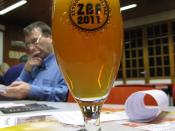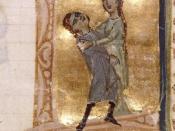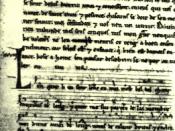What were the troubadours, trobaritz, and trouvers and what were their lives like? This paper will offer a brief overview on the troubadours, trobaritz, and trouvers as well as give an introduction to each one, and explain the difference between them. Lastly, it will describe how they lived during the Middle Ages.
Troubadours were noble poet-musicians from Southern France (Provence) who flourished from the end of the 11th century through to the 13th century. The word troubadour comes from the Occitan verb "trobar" which means find. (Troubadour 1997) Troubadours were primarily composers who in a lot of cases also performed their works (Randel 1975). There were more than 400 known troubadours living between 1090 and 1292, and a few of the most famous were: Jaufré Rudel, Bernart de Ventadorn, Peire Vidal, and Raimbaut de Vaqueiras (Troubadours 2001).
According to the main sources of surviving information on the troubadours, the vidas, they all had a wide variety of social backgrounds, varying from great lords and kings (Richard I, Guilhem de Peitieu) to the nobility (Guillem de Bergueda, Bertran de Born Dalfi d'Alvernhe), poor knights (Raimon de Mireval, Guilhem Ademar, scions of the bourgeoisie (Piere Vidal, Elias Cairel) to clerks, errant minstrels and others who were only identified by where they are from and the talent they displayed (Gaunt and Kay 1999).
The troubadour was occasionally accompanied in his travels by an apprentice or servant, called a joglar, who would provide accompanying music for the poet or sometimes even sing the songs. The joglar was of a lower caste, so the troubadour's fame was never credited to the joglar as well, although it is true that some poets of very high talent rose from being joglars and attained the rank of troubadours (Troubadour 2003).
This tradition of poet-composer-performers delighted...


